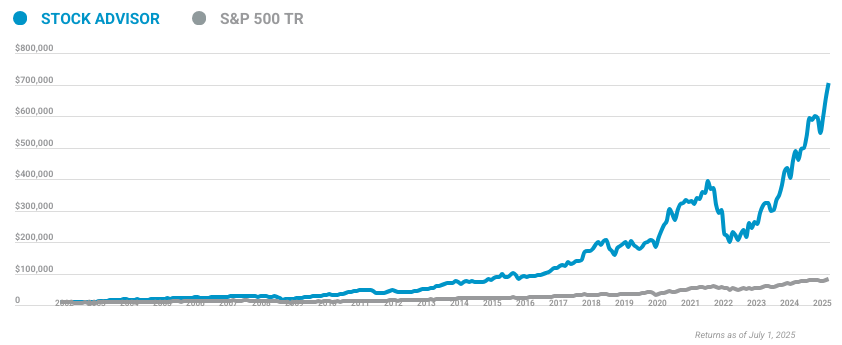Wal-Mart is the No. 1 retailer in the world. In 1972, it was breaking the rules of the American marketplace. Recently, I've studied the company's archived annual reports because they offer a blueprint of a small company on the verge of world domination.
A brief look back
The story of Wal-Mart's rise is the stuff of legend. The cover of the company's 1972 annual report featured the locations of its 51 stores in five states: Arkansas, Louisiana, Kansas, Oklahoma, and Missouri. Today, there are 1,500 stores -- in eight countries! In 1972, Sam Walton totaled 2,300 employees in the Wal-Mart world. Today, there are 1.8 million associates. Since the early 1970s, the company has increased more than 1,000 times in value -- growing from a $195 million micro cap to a $200 billion global leader.
Impressive? Quite. Amazing? Certainly. Reproducible? Absolutely.
So, then, how did they do it? How could investors have known way back when that Wal-Mart was a Rule Breaking growth stock?
Clues to use
Three traits jumped out at me while flipping through the pages of the Wal-Mart annual:
- Based on top-line growth, the company was going nowhere but up. From 1969 to 1970, sales grew 44%. From 1970 to 1971, they grew another 44%. From 1971 to 1972, sales grew an astounding 76%. Sales were increasing and accelerating.
- Management at the young company was competent and shareholder-friendly. Return on equity (ROE) was 35% in 1971. Return on assets was 10%. The very next year ROE was an absurd 63%. In other words, Sam Walton and his team were maximizing the business model.
- President Sam Walton had a clear and compelling vision for the future. That vision included dominant store growth in communities within 300 miles of the distribution center, and an efficient business model that could maintain the lowest possible prices and margins.
Those three Rule Breaking tenets formed the basis of Wal-Mart's sustainable advantage and helped it become one of the strongest public companies in the world.
Foolish final thoughts
Accelerated sales, sustainable advantage, and smart management are three factors the Motley Fool Rule Breakers team uses to identify tomorrow's landscape-changing companies today. They were the key to Wal-Mart's success, and they also catapulted a number of other industry-leading companies, including online retailer Amazon.com (NASDAQ:AMZN), home retailer Bed Bath & Beyond (NASDAQ:BBBY), fashion leader Coach (NYSE:COH), legal defense provider Pre-Paid Legal (NYSE:PPD), GPS leader Garmin (NASDAQ:GRMN), teen retailer Hot Topic (NASDAQ:HOTT), and restaurant chain P.F. Chang's (NASDAQ:PFCB).
Early investments in such groundbreaking companies could have supercharged your portfolio. How much? Since it's not reasonable to assume you can buy every Rule Breaker at its IPO, let's assume you found these companies a full year after they came public:
|
Company |
IPO Date |
CAGR |
|---|---|---|
|
Wal-Mart |
Oct. 1, 1970 |
22% |
|
Amazon.com |
May 15, 1997 |
26% |
|
Bed Bath & Beyond |
June 5, 1992 |
23% |
|
Coach |
Oct. 6, 2000 |
59% |
|
Pre-Paid Legal |
March 7, 1984 |
18% |
|
Garmin |
Dec. 8, 2000 |
43% |
|
Hot Topic |
Sept. 24, 1996 |
23% |
|
P.F. Chang's |
Dec. 4, 1998 |
26% |
|
Average CAGR* |
30% |
A long-term 30% CAGR is incredible -- better than the returns of most master investors. And that's because we're not accounting for any losers in this portfolio. But as my colleague John Reeves showed using Starbucks (another stock with Rule Breaking traits) as an example, one big winner has the power to erase the memory of any and all losers. There's simply enormous profit potential in finding Rule Breakers early on -- especially if you can do it with any regularity.
To date, Fool co-founder David Gardner and his Rule Breakers team have tapped more than 30 companies that aspire to the Rule-Breaking profile of accelerating sales, sustainable advantage, and smart management -- and they expect to find many more. The current picks are up more than 15 percentage points on the S&P 500, with three doubling and two tripling in little more than a year. There are some losers as well, but that's all part of the fun.
If you want to take a look at the companies they've found, read their analysis, and interact with thousands of investors who are actively following these companies, join the service free for 30 days. There's no obligation to subscribe.
It pays to look for companies that are poised to break the rules of mediocre business.
This article was originally published Aug. 22, 2005. It has been updated.
Tim Hanson owns none of the companies mentioned in this article. Amazon.com, Garmin, Starbucks, and Bed Bath & Beyond are Motley Fool Stock Advisor recommendations. Wal-Mart is an Inside Value recommendation. No Fool is too cool fordisclosure ... and Tim's pretty darn cool.




